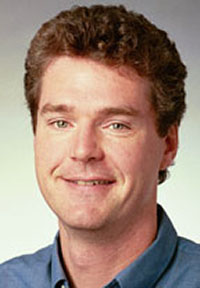Abstract: Integration of localized molecular spectroscopy into standard medical imaging instrumentation has been slow in developing, yet today there have been major developments which make it achievable on a routine basis. NMR spectroscopy of tumors is done routinely in some centers, and the potential for near-infrared spectroscopy (NIRS) is also available. NIRS is combined with Image-guided recovery of the tissue components, using standard MR images, to quantify the spectroscopic features of breast cancer. A prototype system integrating NIRS into a 3T MR breast coil is outlined, and the ongoing study using the MR image as the template upon with spectroscopy is completed will be presented, with results from neoadjuvant chemotherapy monitoring.
The detector scheme for MR or CT-guided NIR is perhaps the most complicated decision for integration, as most useful choices take optical spectroscopy out of the “inexpensive” category. Two prototype systems for frequency domain and broadband spectral imaging of tissue are discussed, and it is shown that the spectral tomography system is ideal for fluorescence or bioluminescence tomography in vivo. This type of hybrid imaging is still in its infancy, yet using it to guide therapy or to properly individualize therapy choice is the next logical step. Use of MRI or CT as the backbone technology to exploit NIRS is a logical step for integration of this modality into clinical use.
At the small animal imaging level, much more can be achieved, and the combination of 3T MR with NIRS for small animal studies is also discussed. Molecular tracers such as Epidermal Growth Factor and Protoporphyrin IX are shown to be increased in glioma tumors, providing actually superior detection of the tumors than with MR alone. The use of hybrid imaging systems such as image-guided NIRS is likely to be the next major phase of imaging instrumentation development, as it allows quantification of molecular tracers and biophysical imaging of tissue, using contrast mechanisms which are not otherwise available.
Biography: Brian W. Pogue, Ph.D. is and Dean of Graduate Studies at Dartmouth College and a Professor of Engineering Sciences at the Thayer School of Engineering at Dartmouth. He has B.Sc and M.Sc degrees in Physics from York University and a Ph.D. in Medical Physics from McMaster University, in Canada. He holds a Research Scientist appointment through the Wellman Center for Photomedicine at the Massachusetts General Hospital, and has published over 300 papers and abstracts in the areas of biomedical optics, diffuse spectral tomography, breast cancer and photodynamic therapy of cancer. His research is funded through two program grants and several individual grants from the National Cancer Institute. He is Deputy Editor for the journal Optics Letters for the OSA. He is also on the editorial boards of Medical Physics, the Journal of Biomedical Optics, and the Journal of Photochemistry and Photobiology B, and is a Program Chair for the upcoming European Conference on Biomedical Optics, in June 2009 in Munich.

